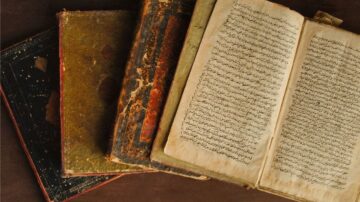Books of mustalah (methodology) speak of a number of classes of hadiths in accordance with their status. The following broad classifications can be made, each of which is to be explained in later articles.
- According to the reference to a particular authority, that is, the Prophet (peace and blessings be upon him), a Companion, or a Successor; such hadiths are called marfu` (elevated), mauquf (stopped) and maqtu` (severed) respectively.
- According to the links in the isnad (chain of transmission), that is, whether the chain of reporters is interrupted or uninterrupted; for example, musnad (supported), muttasil (continuous), munqati` (broken), mu`allaq (hanging), mu`dal (perplexing), and mursal (hurried).
- According to the number of reporters involved in each stage of the isnad; for example, mutawatir (consecutive) and ahad (isolated), the latter being divided into gharib (scarce, strange), `aziz (rare, strong), and mashhur (famous).
- According to the manner in which the hadith has been reported, such as using the Arabic words `an (“on the authority of”), haddathana (“he narrated to us”), akhbarana (“he informed us”) or sami`tu (“I heard”). In this category falls the discussion about mudallas (concealed) and musalsal (uniformly-linked) hadiths. In the quotation of isnads in the following series of articles, the first mode of narration mentioned above will be represented with a single broken line thus: —. The three remaining modes of narration mentioned above, which all strongly indicate a clear, direct transmission of the hadith, are represented by a double line thus: ===.
- According to the nature of the matn (text) and isnad, for example, an addition by a reliable reporter, known as ziyadatu ath-thiqah, or opposition by a lesser authority to a more reliable one, known as shadh (irregular). In some cases, a text containing a vulgar expression, unreasonable remark, or obviously erroneous statement is rejected by the traditionists outright without consideration of the isnad. Such a hadith is known as munkar (denounced). If an expression or statement is proved to be an addition by a reporter to the text, it is declared as mudraj (interpolated).
- According to a hidden defect found in the isnad or text of a hadith. Although this could be included in some of the previous categories, a hadith mu`allal (defective hadith) is worthy to be explained separately. The defect can be caused in many ways; for example, two types of hadith mu`allal are known as maqlub (overturned) and mudtarib (shaky).
- According to the reliability and memory of the reporters. The final judgment on a hadith depends crucially on this factor. Verdicts such as sahih (sound), hasan (good), da`if (weak) and maudu` (fabricated, forged) rest mainly upon the nature of the reporters in the isnad.
*By Sheikh Suhaib Hassan
* Based on the book: An Introduction to the Science of Hadith, with the author’s kind permission. Excerpted, with some modifications from:

